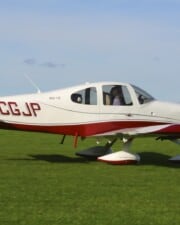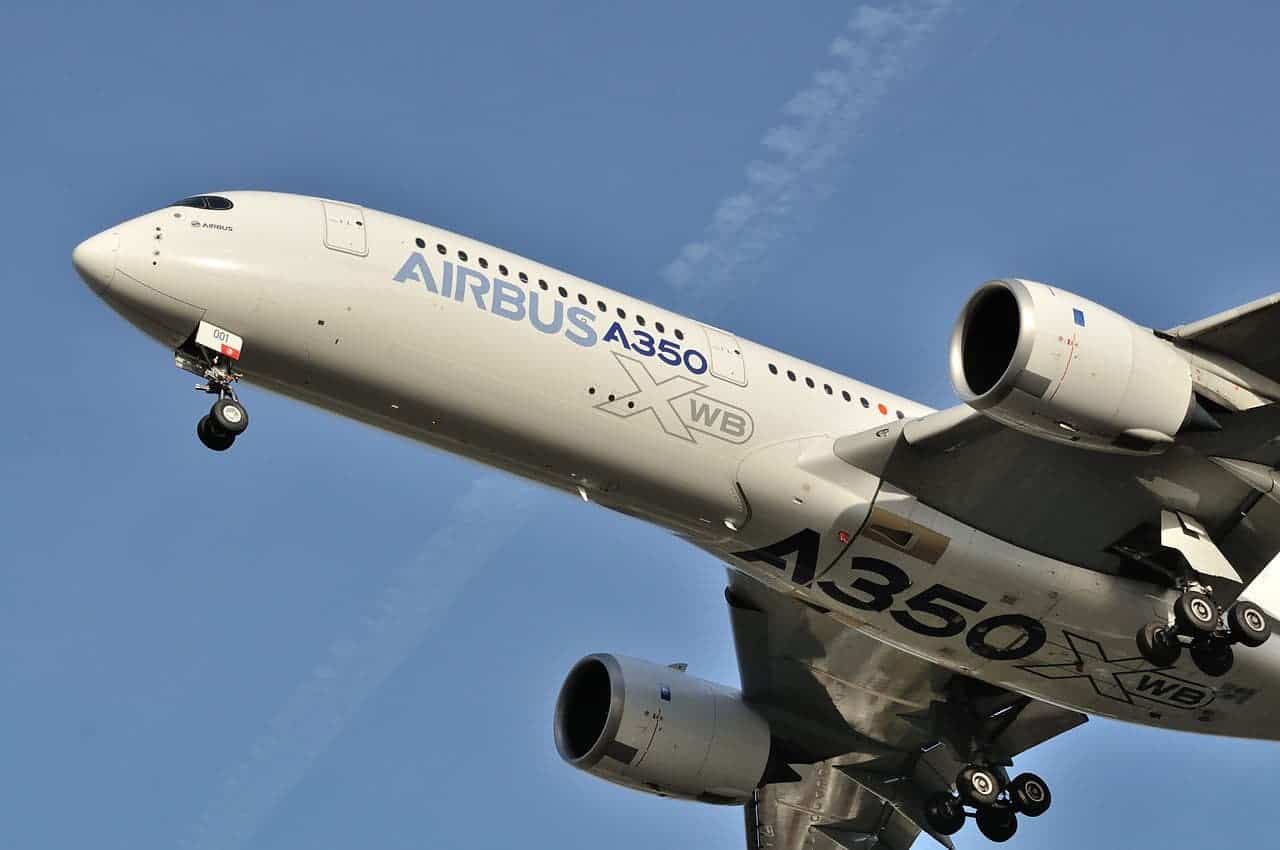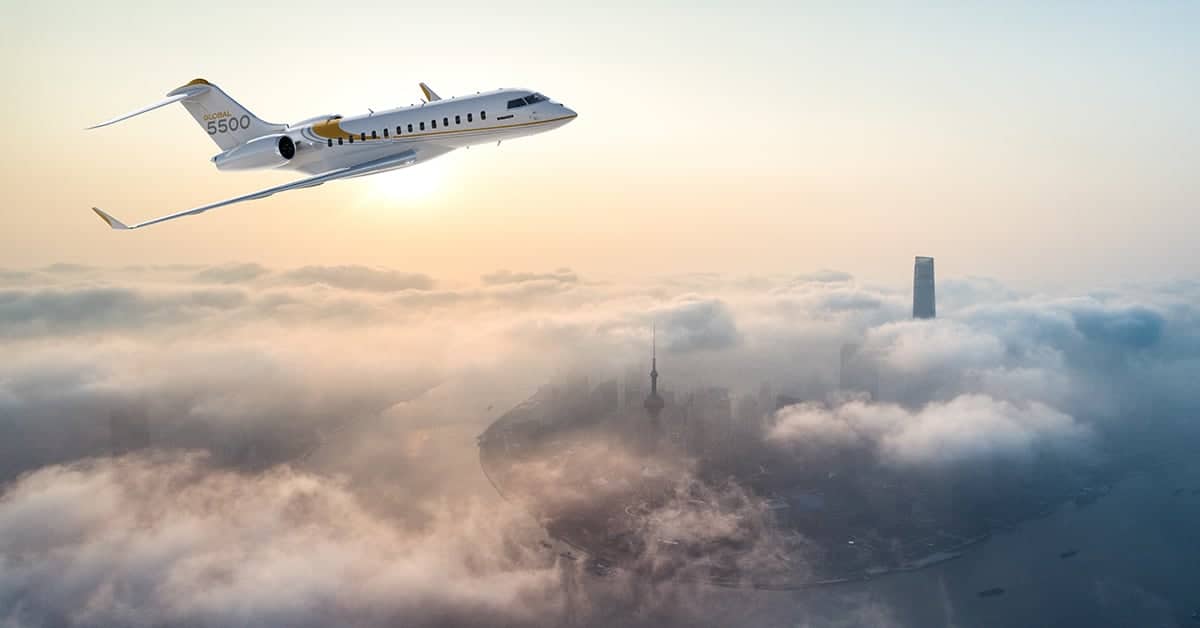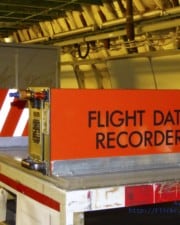A sound just as dramatic as the aircraft responsible for them, fighter jets and their ear-splitting bellowing thunder arriving from over the horizon before blitzing overhead is a sound that causes many to look to the heavens to try and spot the elusive beast with their own eyes. Why are they so loud and do they have to be?
We are all familiar with the thunderous sound jet-powered aircraft make. Fighter jets in particular are the loudest of the jet engine bunch, with the average fighter jet clocking in at a whopping 140 decibels. That’s only 40 decibels shy of causing permanent hearing damage!
Why is it that commercial jet-powered aircraft, such as the ones operated by airlines, corporations and private individuals alike, although loud, do not make the same roaring noise a fighter jet makes, despite also being a jet-powered plane?
Jet engines by nature are extremely explosive, sucking in large amounts of air to be combusted and ignited into a hot gas to power the hulking mass of an aircraft. Couple that with afterburners, and you get a lightning-fast aircraft, but a noisy one at that...
So Why Exactly Are Fighter Jets So Loud?
The source of fighter jets’ deafening sound can be traced to both their jet engines and the turbulence they experience in-flight.
Fighter jets are fitted with low-bypass jet engines capable of flying supersonic, or faster than the speed of sound at 1,225 km/h (761 mph / 661 kn).
Most fighter jet engines are also equipped with afterburners, which provide a significant boost in speed and thrust.
This combination of supersonic low-bypass engines with afterburners fitted to them guarantees that fighter jets will produce an ear-splitting sound heard from far away.
How Loud Are Fighter Jets
A jet taking off produces 150 dB of noise, measured at 80 feet distance, according to this research. This would apparently cause an eardrum rupture. A jet taking off produced 100dB measured at 1000 feet. A military jet with afterburner taking off from an aircraft carrier produces 130 dB at 50 feet. A Boeing 737 at 6080 feet during landing produced 97 dB.
- Jet take-off (80 feet / 25 meter) – 150dB
- Jet take-off (1000 feet / 305 meter) – 100dB
- Jet with afterburner take-off from aircraft carrier (50 feet / 15 meter) – 130dB
- Boeing 737 landing (6080 feet / 1853 meter) – 97dB
The Jet Engine is Loud
In order to fully understand why a fighter jet is so loud, we must take a look at the jet engine which powers fighter jets, and indeed commercial aircraft zooming through the skies above on a daily basis.
The typical jet engine is made up of several different parts all working together to power the aircraft and propel it through the sky as quickly as possible. The most noticeable part of a jet engine is the fan, or the spinning blades you see when looking at a jet engine from the front.

The fan’s job is to collect and funnel massive amounts of air into the engine for the compressor to compress the air up to 12 times its original pressure. It then gets fed into a combustion chamber, which mixes the compressed air with fuel before igniting the combination.
This ignited mixture turns into a rapidly expanding gas, which escapes through the back of the jet engine and in turn, propels the engine forward.
Despite being very complex, the jet engine has been around since before World War II began, when British aviation engineer Sir Frank Whittle invented and tested the first combustion jet engine in 1937.
Although it has evolved tremendously throughout the years since the first prototype was created, the basic principles of Whittle’s pioneering jet engine remained unchanged.
Emitting red-hot temperatures and deafening sounds, these jet engines are a real marvel of aviation engineering, not to mention the driving force behind the success of the Royal Air Force and the United States Air Force during World War II.
Turbulence Increases Noise
The engines themselves are not the only thing responsible for the loud noise fighter jets make. Natural forces are to blame too, such as turbulence, a natural phenomenon which causes calm air to be interrupted by eddies and vertical drafts, resulting in irregular air motion.
Turbulence does not only make it uncomfortable for passengers to fly through, but turbulence caused by the sudden ejection of a fighter jet’s gas from its jet engine significantly increases the sound a fighter jet makes when passing through the air.
Fighter jets can attempt to diminish the impact that high-speed hot gas exiting the aircraft’s jet engine has on the surrounding air to try and minimize the thundering sound the jet fighter emits.
This is done by fitting a “hush kit” to the back of the jet engine, a device which mixes cold air with the scorching gas of the jet engine in an attempt to decrease the gas’ momentum and temperature, decreasing the noise levels and the overall performance of the aircraft.
Is It Necessary For Fighter Jets To Be So Loud?
You are probably wondering if all that noise is really necessary, after all, some fighter jets are used for stealth and reconnaissance missions.
Even though fighter jets are not required to be as loud as most of them are, the noisy low-bypass jet engines powering them are designed for high maneuverability and more speed in mind.
As we have seen with the addition of a “hush kit” to the back of a fighter jet’s engine, noise-reduction efforts usually have a detrimental impact on the fighter jet’s overall performance.
This makes most engineers working and designing jet engines stay clear of trying to reduce the noise levels of fighter jet engines since it does more harm than good.
This makes it very difficult to design and build a fighter jet that can match the speed and maneuverability of the low-bypass-powered F-22 or F-35 fighter jets without also using a noisy low-bypass jet engine.
Not only are the engines of fighter jets incredibly loud, but supersonic travel comes with breaking through the sound barrier, which upon breaking through, delivers a head-splitting noise that sounds like a cannon going off.
Fighter jets are designed with stealth and anonymity in mind instead of rapid acceleration and high maneuverability certainly exist, however, they still produce a lot of noise compared to your average civilian aircraft and lack the speed and agility of nimble low-bypass powered fighter jets.
Why Are Loud Fighter Jets A Good Thing?
Fighter jets are loud for a reason, their immensely complex jet engines which took years to design, engineer and develop, are extremely crucial to them being able to do their job when lives are at stake.
Fast, loud and as cocky as the people piloting them, fighter jets need split-second reactions and immense velocity at a moment’s notice. There’s no room for underperforming engines tweaked to “reduce unnecessary noise”.
After all, you would hate to be flying at any speed under supersonic if you are trying to get away from an enemy aircraft just waiting to gun you down.
What About Commercial Jet Aircraft?
Fighter jets and jet-powered civilian aircraft both use jet engines to propel them forward and into the air, and as such, many people think fighter jets and jumbo jets use the same engines.
This is not the case, however, as commercial aircraft made by Boeing, Airbus, etc. all use high-bypass engines instead of the noisier low-bypass engines found on most fighter jets.
Fighter jets and commercial aircraft do not use the same engines because they are two very different types of aircraft designed to perform two completely different tasks.
Commercial aircraft must take off and land at busy airports, often surrounded by houses or residential areas, every single day.
Fighter jets, on the other hand, only take off and land at air force bases, which are usually located away from large residential areas such as cities or suburban areas.
This means that fighter jets are not required to abide by the same safety regulations commercial airliners must abide by.
These safety regulations touch on various subjects related to owning and operating an aircraft, one of which is the maximum amount of noise pollution a commercial aircraft is legally allowed to emit.
This directly places restrictions on how loud high-bypass engines are permitted to be, and as such, ensures that no commercially operating jet-powered aircraft is noisier than a fighter jet.
Whereas fighter jets use proper low-bypass jet engines, large commercial jumbo jets use high-bypass turbofan engines which look wildly different from a typical fighter jet’s engine.
Why Are Commercial Aircraft Not Fitted With Low-Bypass Engines Used By Fighter Jets?
Apart from the legal restrictions placed upon civilian aircraft, it is simply not practical to have commercial aircraft flying at the supersonic speeds fighter jets fly at. It places a lot of strain on the hull of the aircraft and makes for a less comfortable flight experience for passengers.
Despite not being practical in the world we live in today, the airline industry has experimented with supersonic flight in the past.
Most notably of which was the Concorde, a hypersonic commercial aircraft jointly developed by the British and French in the mid-20th century, or its Soviet counterpart, the Tupolev Tu-144 “Concordski”.
Although a massive triumph for the aviation industry, the Concorde was marred with concerns right from the start.
The jet engines proved unreliable and caused extreme wear on the structure of the aircraft, plus a fatal accident involving Air France Flight 4590 on July 25, 2000, shortly after take-off spelled the end for the Concorde and supersonic commercial aviation as a concept.
Airlines have stuck with high-bypass turbofan engines ever since, relegating the fast and furious low-bypass jet engines to fighter jets and other military-use aircraft only.
Related Posts














